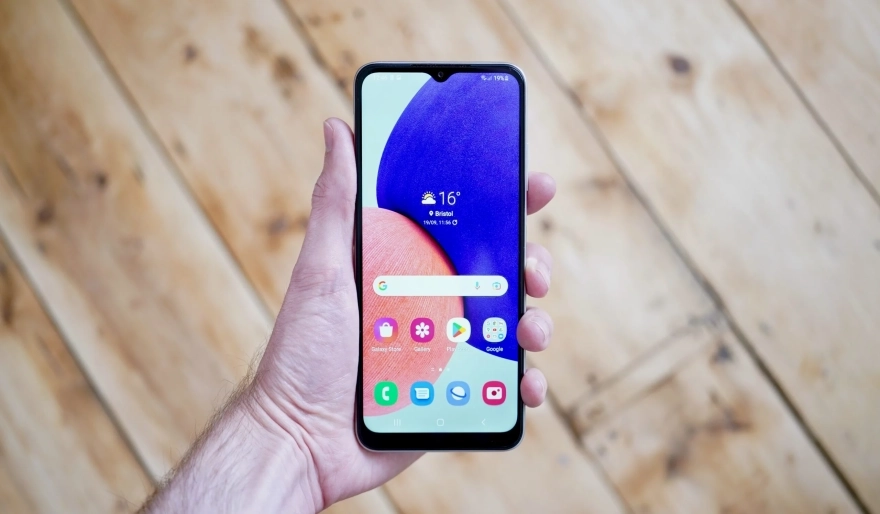Guide to Using NFC on Android for Mobile Payments
11 min read Guide to Using NFC on Android for Mobile Payments - written by YASSIN Zoi, Senior Content Marketer March 15, 2024 15:37
1. Introduction to NFC Technology
NFC can come in various forms, such as tags or
stickers, and can be embedded in various devices, such as smartcards and mobile
phones. In powered devices, the voltage across the terminals of the antenna
creates an electric field, and a reader can influence the inductive load
determining the current that will flow through the antenna. Two-way
communication occurs between the powered device and the reader, meaning that
real-time data is transmitted between the reader and the powered device. This
two-way communication between the reader and the powered device is due to the
fact that a reader and a powered device each have their own NFA (Near Field
Antenna). When this link is broken, the HF RFID card, passively powered by the
reader, is unable to perform any transaction, or passive transactions are put
on hold until the reader is within the boundary range of the powered device.
This affects the readers that perform playback, reactivity, or reactivity
reflection.
NFC (Near Field Communication) enables connections
between devices that are in close proximity to each other, typically less than
10 cm. It operates on the same frequency as HF RFID (13.56 MHz) and is a non-contact
IP connectivity that works by simple touch. NFC and HF RFID communicate through
electromagnetic induction, and a magnetic field between two looped antennas
forms if the active device is connected to an external power source. Data is
transmitted through a modulated magnetic field and the modulated field is
coupled with a second looped antenna in the passive device.
2. Setting Up NFC for Mobile Payments on Android Devices
Setting up a device in order to have mobile payment
capability is fairly easy. If you don't have a device with NFC enabled yet,
here are a few of the options. For Android, most of the devices that aren't too
old and are considered smartphones are already NFC enabled. The most common way
your device can be used for mobile payments is if the device has Android 4.4
Kitkat running. Devices with Android Kitkat (4.4 and above) will have HCE (Host
Based Card Emulation) technology embedded and will let you use the Host Card
Emulation Feature on your device.
2. Setting Up NFC for Mobile Payments on Android
Devices
----------------------------------------------------------------------------
NFC technology is one of the more convenient
technologies that anyone can use to get things done faster, especially in this
modern world where everyone is in a hurry. Whether you're looking for a device
to do contactless payments or one that can help make transportation a little
bit less of a hassle, having NFC technology on a device is a great option. What
could be one of the best examples of what a smartphone can do with an NFC chip
is the ability to make mobile payments using your device. In this article,
we'll show you how to set up your device so you can make mobile payments using
NFC.
3. Security Considerations for NFC Mobile Payments
Applied to Android, to support NFC payments one needs
a somewhat more precise threat model. The standard business case usually posits
that you have an NFC-enabled SIM. Such a SIM, among other things, is able to
store the so-called user's credit-card-credential and to take care of the
actual NFC payment transaction. Thus, this form of NFC payment does not involve
Android at all; all it does in this context is act as a visualization device
for a payment application running on the SIM, inform you as to the amount
involved and possibly other details about the payment, and channel the PIN
entry/user authentication procedure in some manner. There are special
application processors from SCM and others, intended to make third-party
applications access the secure storage - but these chips do not interface with
Android. As in POS, the actual NFC transaction never touches the
general-purpose OS at all; inside the payment security perimeter, the
general-purpose OS is Evil.
When the concept of NFC payments first started gaining
traction, the mass media seemed bamboozled by the apparent enormity of the
security challenge. Especially in early 2011, the popular press was a fair bit
concerned with the humble proximity payment device we use today. Nowadays, the
same level of concern is mostly reserved for Calypso cards; the rest of the
payment world seems to be doing just fine. As for the general security
situation of mobile payment systems, one hears much discussion about the
potential security horrors. But if we go by what is known to occur in the real
world, a very big nothing is happening here. As far as one can tell, mobile
payments, NFC or not, are secured as effectively as other proximity payment
systems - possibly with a bit of a boost, due to the inherent difficulty of
carrying about the payment credential. If the latter part really is a security
bonus as intended, or a side effect of getting a business case to be viable, is
up for discussion.
4. Popular NFC Payment Apps and Services
Samsung Pay is another popular mobile wallet that has
seen its adoption rate do really well, also moving quickly in the last couple
of years. That rapid growth has been due in part to the ease and utility of
payouts, excellent customer service, and sleek user interface.
Google Pay has integrated the capabilities to not only
store your credit and/or debit cards, but also your loyalty cards, gift cards,
and transit cards you use every day. Another helpful feature includes the use
of Google's account protection, which recognized as providing the best
all-around security when it comes to mobile payments. Verizon and T-Mobile in
the United States aren't afraid to stand behind Google Pay, as it's
pre-installed on the phones they sell. Moreover, you can add metropolitan
transit passes by using your camera from inside the Google Pay app as well. The
app can be customized by displaying the cards of your choice first.
In trying to sell you on implementing an NFC-based
mobile payment point-of-sale solution, let's now look at several popular NFC
payment systems that people are happily using every day. You may have heard of
these - let's find out which ones are resonating well with consumers.
5. Future Trends and Developments in NFC Technology for
Mobile Payments
However, the rapid technical evolution of NFC has
posed significant challenges to mobile networks, mainly concerning the issues
of privacy and security in utilizing NFC technology. The simplicity and
compatibility of NFC with the existing credit card payments network is similar
to what we have with other forms of online and offline payments. Therefore, the
development of NFC payments to leverage the existing credit card payments
network could be compared to that of updating Web 1.0 to Web 2.0. A cluttered
market with a variety of different contactless card products was also posited
as a challenge to users. Card and billing data are spread across different
service providers' TSMs, and card owners and service providers can only
directly access their respective credentials. Due to a lack of central
authority or standard mechanism for card registration in TSMs, if a user loses
their mobile phone, the only way to protect their account information involves
two steps of password verification by the TSM and the card issuer's
verification of personal information before the user's account is deleted from
the personal TSM.
The development of security and privacy solutions
within NFC ecosystems should still be a main focus. An increasing number of
global payment solution providers, including UnionPay, have prioritized HCE
technology, enhancing the universality of NFC applications. However, the NFC
market is still restricted by a low level of adoption and the limited number of
NFC-supported handsets in the market. According to the Visa representative,
limited local support, authentication, the limited number of POS terminals and
handsets, and sensitive data storage were the main challenges threatening the
security and privacy of an NFC system. NFC will face increasing applications,
both in industry and in commerce, by providing switch-like connections that
require extremely low power, yet can operate over significant distances.
User Comments (0)
Popular Apps










Editor's Choice









